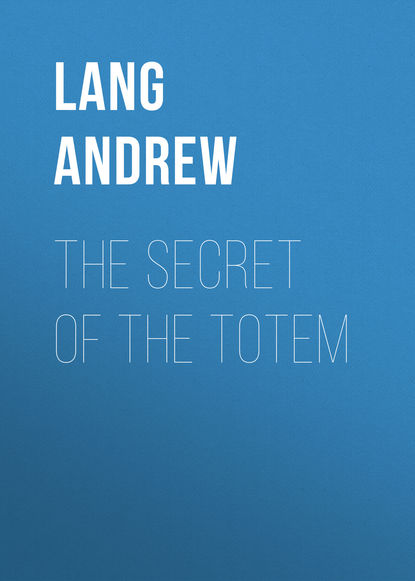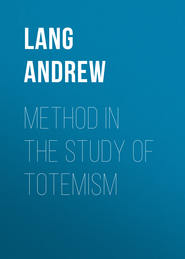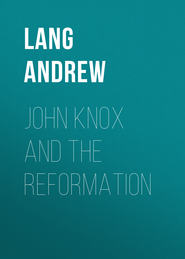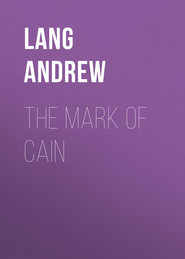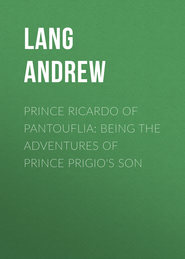По всем вопросам обращайтесь на: info@litportal.ru
(©) 2003-2024.
✖
The Secret of the Totem
Настройки чтения
Размер шрифта
Высота строк
Поля
All these south central (Dieri), southern, and eastern tribes may be studied in Mr. Howitt's book, already cited, which contains the result of forty years' work, the information being collected partly by personal research and partly through many correspondents. Mr. Howitt has viewed the initiatory ceremonies of more than one tribe, and is familiar with their inmost secrets.
For the tribes of the centre and north we must consult two books, the fruits of the personal researches of Mr. Baldwin Spencer, M.A., F.R.S., Professor of Biology in the University of Melbourne, and of Mr. F. J. Gillen, Sub-Protector of Aborigines, South Australia.[17 - Native Tribes of Central Australia, 1899. Northern Tribes of Central Australia, 1904. Macmillan.] For many years Mr. Gillen has been in the confidence of the tribes, and he and Mr. Spencer have passed many months in the wilds, being admitted to view the most secret ceremonies, and being initiated into the myths of the people. Their photographs of natives are numerous and excellent.
These observers begin in the south centre, where Mr. Howitt leaves off in his northerly researches, and go north. They start with the Urabunna tribe, north-east of Lake Eyre, congeners of Mr. Howitt's Dieri, and speaking a dialect akin to theirs, while the tribe intermarry marry with the Arunta (whose own dialect has points in common with theirs) of the centre of the continent These Urabunna are apparently in the form of social organisation which we style primitive (No. 1), but there are said, rather vaguely, to be more restrictions on marriage than is usual, people of one totem in Kiraru phratry being restricted to people of one totem in Matteri phratry.[18 - Cf. Howitt, Native Tribes of South-East Australia, pp. 188-189. Native Tribes of Central Australia, p. 60.]
They have phratries, totem kins, apparently no matrimonial classes (some of their rules are imperfectly ascertained), and they reckon descent in the female line. But, like the Dieri (and unlike the tribes of the south and east), they practise subincision; they have, or are said to have, no belief in "a supernatural anthropomorphic great Being"; they believe in "old semi-human ancestors," who scattered about spirits, which are perpetually reincarnated in new members of the tribe; they practise totemic magic; and they cultivate the Dieri custom of allotting paramours. Thus, by social organisation, they attach themselves to the south-eastern tribes (1), but, like the Dieri, and even more so (for, unlike the Dieri, they believe in reincarnation), they agree in ceremonies, and in the general idea of their totemic magic, rites, and mythical ideas, with tribes who, as regards social organisation, are in state (4), reckon descent in the male line, and possess, not four, but eight matrimonial classes.
This institution of eight classes is developing in the Arunta "nation," the people of the precise centre of Australia, who march with, and intermarry with, the Urabunna; at least the names for the second set of four matrimonial classes, making eight in all, are reaching the Arunta from the northern tribes. All the way further north to the Gulf of Carpentaria, male descent and eight classes prevail, with subincision, prolonged and complex ceremonials, the belief in reincarnation of primal semi-human, semi-bestial ancestors, and the absence (except in the Kaitish tribe, next the Arunta) of any known belief in what Mr. Howitt calls the "All Father." Totemic magic also is prevalent, dwindling as you approach the north-east coast. In consequence of reckoning in the male line (which necessarily causes most of the dwellers in a group to be of the same totem), local organisation is more advanced in these tribes than in the south and east.
We next speak of social organisation (5), namely, that of the Arunta and Kaitish tribes, which is without example in any other known totemic society all over the world. The Arunta and Kaitish not only believe, like most northern and western tribes, in the perpetual reincarnation of ancestral spirits, but they, and they alone, hold that each such spirit, during discarnate intervals, resides in, or is mainly attached to, a decorated kind of stone amulet, called churinga nanja. These objects, with this myth, are not recorded as existing among other "nations." When a child is born, its friends hunt for its ancestral stone amulet in the place where its mother thinks that she conceived it, and around the nearest rendezvous of discarnate local totemic souls, all of one totem only. The amulet and the local totemic centre, with its haunted nanja rock or tree, determine the totem of the child. Thus, unlike all other totemists, the Arunta do not inherit their totems either from father or mother, or both. Totems are determined by local accident. Not being hereditary, they are not exogamous: here, and here alone, they do not regulate marriage. Men may, and do, marry women of their own totem, and their child's totem may neither be that of its father nor of its mother. The members of totem groups are really members of societies, which co-operatively work magic for the good of the totems. The question arises, Is this the primitive form of totemism? We shall later discuss that question (Chapter IV.).
Meanwhile we conceive the various types of social organisation to begin with the south-eastern phratries, totems, and female reckoning of descent (1) to advance to these plus male descent (2a), and to these with female descent and four matrimonial classes (2b). Next we place (3) that four-class system with male descent; next (4) the north-western system of male descent with eight matrimonial classes, and last (as anomalous in some respects), (5) the Arunta-Kaitish system of male descent, eight classes, and non-hereditary non-exogamous totems.
As regards ceremonial and belief, we place (1) the tribes south and east of the Dieri. (2) The Dieri. (3) The Urabunna, and north, central, and western tribes. (4) The Arunta. The Dieri and Urabunna we regard (at least the Dieri) as pristine in social organisation, with peculiarities all their own, but in ceremonial and belief more closely attached to the central, north, and west than to the south-eastern tribes. As concerns the bloody rites, Mr. Howitt inclines to the belief (corroborated by legends, whatever their value) that "a northern origin must ultimately be assigned to these ceremonies."[19 - Howitt, op. cit., p. 676, N.T., p. 20.] It is natural to assume that the more cruel initiatory rites are the more archaic, and that the tribes which practise them are the more pristine. But this is not our opinion nor that of Messrs. Spencer and Gillen. The older rite is the mere knocking out of front teeth (also used by the Masai of East Central Africa). This rite, in Central Australia, "has lost its old meaning, its place has been taken by other rites."[20 - Native Tribes of Central Australia, p. 214. The same opinion is stated as very probable in Northern Tribes of Central Australia, p. 329.] … Increased cruelty accompanies social advance in this instance. In another matter innovation comes from the north. Messrs. Spencer and Gillen are of the opinion that "changes in totemic matters have been slowly passing down from north to south." The eight classes, in place of four classes, are known as a matter of fact to have actually "reached the Arunta from the north, and at the present moment are spreading south-wards."[21 - N. T., p. 20.]
Again, a feebler form of the reincarnation belief, namely, that souls of the young who die uninitiated are reincarnated, occurs in the Euahlayi tribe of north-western New South Wales.[22 - Mrs. Langloh Parker's M.S.] Whether the Euahlayi belief came from the north, in a limited way, or whether it is the germinal state of the northern belief, is uncertain. It is plain that if bloody rites and eight classes may come down from the north, totemic magic and the faith in reincarnation may also have done so, and thus modified the rites and "religious" opinions of the Dieri and Urabunna, who are said still to be, socially, in the most pristine state, that of phratries and female descent, without matrimonial classes.[23 - I am uncertain as to this point among the Urabunna, as will appear later.] It is also obvious that if the Kaitish faith in a sky-dweller (rare in northern tribes) be a "sport," and if the Arunta churinga nanja, plus non-hereditary and non-exogamous totems, be a "sport," the Dieri and Urabunna custom, too, of solemnly allotted permanent paramours may be a thing of isolated and special development, not a survival of an age of "group marriage."
CHAPTER II
METHOD OF INQUIRY
Method of inquiry – Errors to be avoided – Origin of totemism not to be looked for among the "sports" of socially advanced tribes – Nor among tribes of male reckoning of descent – Nor in the myths explanatory of origin of totemism – Myths of origin of heraldic bearings compared – Tribes in state of ancestor-worship: their totemic myths cannot be true – Case of Bantu myths (African) – Their myth implies ancestor-worship – Another African myth derives tribal totems from tribal nicknames – No totemic myths are of any historic value – The use of conjecture – Every theory must start from conjecture – Two possible conjectures as to earliest men gregarious (the horde), or lonely sire, female mates, and off-spring – Five possible conjectures as to the animal names of kinships in relation to early society and exogamy – Theory of the author; of Professor Spencer; of Dr. Durkheim; of Mr. Hill-Tout; of Mr. Howitt – Note on McLennan's theory of exogamy.
We have now given the essential facts in the problem of early society as it exists in various forms among the most isolated and pristine peoples extant. It has been shown that the sets of seniority (classes), the exogamous moieties (phratries), and the kinships in each tribe bear names which, when translated, are usually found to denote animals. Especially the names of the totem kindreds, and of the totems, are commonly names of animals or plants. If we can discover why this is so, we are near the discovery of the origin of totemism. Meanwhile we offer some remarks as to the method to be pursued in the search for a theory which will colligate all the facts in the case, and explain the origin of totemic society. In the first place certain needful warnings must be given, certain reefs which usually wreck efforts to construct a satisfactory hypothesis must be marked.
First, it will be vain to look for the origin of totemism either among advanced and therefore non-pristine Australian types of tribal organisation, or among peoples not Australian, who are infinitely more forward than the Australians in the arts of life, and in the possession of property. Such progressive peoples may present many interesting social phenomena, but, as regards pure primitive totemism, they dwell on "fragments of a broken world." The totemic fragments, among them, are twisted and shattered strata, with fantastic features which cannot be primordial, but are metamorphic. Accounts of these societies are often puzzling, and the strange confused terms used by the reporters, especially in America, frequently make them unintelligible.
The learned, who are curious in these matters, would have saved themselves much time and labour had they kept two conspicuous facts before their eyes.
(1) It is useless to look for the origins of totemism among the peculiarities and "sports" which always attend the decadence of totemism, consequent on the change from female to male lineage, as Mr. Howitt, our leader in these researches, has always insisted. To search for the beginnings among late and abnormal phenomena, things isolated, done in a corner, and not found among the tribal organisations of the earliest types, is to follow a trail sure to be misleading.
(2) The second warning is to be inferred from the first. It is waste of time to seek for the origin of totemism in anything – an animal name, a sacred animal, a paternal soul tenanting an animal – which is inherited from its first owner, he being an individual ancestor male. Such inheritance implies the existence of reckoning descent in the male line, and totemism conspicuously began in, and is least contaminated in, tribes who reckon descent in the female line.
Another stone of stumbling comes from the same logical formation. The error is, to look for origins in myths about origins, told among advanced or early societies. If a people has advanced far in material culture, if it is agricultural, breeds cattle, and works the metals, of course it cannot be primitive. However, it may retain vestiges of totemism, and, if it does, it will explain them by a story, a myth of its own, just as modern families, and even cities, have their myths to account for the origin, now forgotten, of their armorial bearings, or crests – the dagger in the city shield, the skene of the Skenes, the sawn tree of the Hamiltons, the lyon of the Stuarts.
Now an agricultural, metallurgic people, with male descent, in the middle barbarism, will explain its survivals of totemism by a myth natural in its intellectual and social condition; but not natural in the condition of the homeless nomad hunters, among whom totemism arose. For example, we have no reason to suspect that when totemism began men had a highly developed religion of ancestor-worship. Such a religion has not yet been evolved in Australia, where the names of the dead are usually tabooed, where there is hardly a trace of prayers, hardly a trace of offerings to the dead, and none of offerings to animals.[24 - The Dieri tribe do pray to the Mura-Mura, or mythical ancestors, but not, apparently, to the remembered dead.] The more pristine Australians, therefore, do not explain their totems as containing the souls of ancestral spirits. On the other hand, when the Bantu tribes of Southern Africa – agricultural, with settled villages, with kings, and with many of the crafts, such as metallurgy – explain the origin of their tribal names derived from animals on the lines of their religion – ancestor-worship – their explanation may be neglected as far as our present purpose is concerned. It is only their theory, only the myth which, in their intellectual and religious condition, they are bound to tell, and it can throw no light on the origin of sacred animals.
The Bantu local tribes, according to Mr. M'Call Theal, have Siboko, that is, name-giving animals. The tribesmen will not kill, or eat, or touch, "or in any way come into contact with" their Siboko, if they can avoid doing so. A man, asked "What do you dance?" replies by giving the name of his Siboko, which is, or once was, honoured in mystic or magical dances.
"When a division of a tribe took place, each section retained the same ancestral animal," and men thus trace dispersed segments of their tribe, or they thus account for the existence of other tribes of the same Siboko as themselves.
Things being in this condition, an ancestor-worshipping people has to explain the circumstances by a myth. Being an ancestor-worshipping people, the Bantu explain the circumstance, as they were certain to do, by a myth of ancestral spirits. "Each tribe regarded some particular animal as the one selected by the ghosts of its kindred, and therefore looked upon it as sacred."
It should be superfluous to say that the Bantu myth cannot possibly throw any tight on the real origin of totemism. The Bantu, ancestor-worshippers of great piety, find themselves saddled with sacred tribal Siboko; why, they know not. So they naturally invent the fable that the Siboko, which are sacred, are sacred because they are the shrines of what to them are really sacred, namely, ancestral spirits.[25 - "Totemism, South Africa," J. G. Frazer, Man, 1901, No. III. Mr. Frazer does not, of course, adopt the Bantu myth as settling the question.] But they also cherish another totally different myth to explain their Siboko.
We now give this South African myth, which explains tribal Siboko, and their origin, not on the lines of ancestor-worship, but, rather to my annoyance, on the lines of my own theory of the Origin of Totems!
On December 9, 1879, the Rev. Roger Price, of Mole-pole, in the northern Bakuena country, wrote as follows to Mr. W. G. Stow, Geological Survey, South Africa. He gives the myth which is told to account for the Siboko or tribal sacred and name-giving animal of the Bahurutshe – Baboons. (These animal names in this part of Africa denote local tribes, not totem kins within a local tribe.)
"Tradition says that about the time the separation took place between the Bahurutshe and the Bakuena, Baboons entered the gardens of the Bahurutshe and ate their pumpkins, before the proper time for commencing to eat the fruits of the new year. The Bahurutshe were unwilling that the pumpkins which the baboons had broken off and nibbled should be wasted, and ate them accordingly. This act is said to have led to the Bahurutshe being called Buchwene, Baboon people – which" (namely, the Baboon) "is their Siboko to this day – and their having the precedence ever afterwards in the matter of taking the first bite of the new year's fruits. If this be the true explanation," adds Mr. Price, "it is evident that what is now used as a term of honour was once a term of reproach. The Bakuena, too, are said to owe their Siboko (the Crocodile) to the fact that their people once ate an ox which had been killed by a crocodile."
Mr. Price, therefore, is strongly inclined to think "that the Siboko of all the tribes was originally a kind of nickname or term of reproach, but," he adds, "there is a good deal of mystery about the whole thing."
On this point Mr. Stow, to whom Mr. Price wrote the letter just cited, remarks in his MS.: "From the foregoing facts it would seem possible that the origin of the Siboko among these tribes arose from some sobriquet that had been given to them, and that, in course of time, as their superstitious and devotional feelings became more developed, these tribal symbols became objects of veneration and superstitious awe, whose favour was to be propitiated or malign influence averted…"[26 - Stow, MSS., 820. I owe the extract to Miss C. G. Burne.]
Here it will be seen that these South African tribes account for their Siboko now by the myth deriving the sacredness of the tribal animal from ancestor-worship, as reported by Mr. Theal, and again by nicknames given to the tribes on account of certain undignified incidents.
This latter theory is very like my own as stated in Social Origins, and to be set forth and reinforced later in this work. But the theory, as held by the Bahurutsche and Bakuena, does not help to confirm mine in the slightest degree. Among these very advanced African tribes, the Siboko or tribal sacred animal, is the animal of the local tribe, not, as in pure totemism, of the scattered exogamous kin. It is probably a lingering remnant of totemism. The totem of the most powerful local group in a tribe having descent through males, appears to have become the Siboko of the whole tribe, while the other totems have died out. It is not probable that a nickname of remembered origin, given in recent times to a tribe of relatively advanced civilisation, should, as the myth asserts, not only have become a name of honour, but should have founded tribal animal-worship.
It was in a low state of culture no longer found on earth, that I conceive the animal names of groups not yet totemic, names of origin no longer remembered, to have arisen and become the germ of totemism.
Myths of the origin of totemism, in short, are of absolutely no historic value. Siboko no longer arise in the manner postulated by these African myths; these myths are not based on experience any more than is the Tsimshian myth of the Bear Totem, to be criticised later in a chapter on American Totemism. We are to be on our guard, then, against looking for the origins of totemism among the myths of peoples of relatively advanced culture, such as the village-dwelling Indians of the north-west coast of America. We must not look for origins among tribes, even if otherwise pristine, who reckon by male descent. We must look on all savage myths of origins merely as savage hypotheses, which, in fact, usually agree with one or other of our scientific modern hypotheses, but yield them no corroboration.
On the common fallacy of regarding the tribe of to-day, with its relative powers, as primitive, we have spoken in Chapter I.
By the nature of the case, as the origin of totemism lies far beyond our powers of historical examination or of experiment, we must have recourse as regards this matter to conjecture.
Here a word might be said as to the method of conjecture about institutions of which the origins are concealed "in the dark backward and abysm of time."
There are conjectures and conjectures! None is capable in every detail of historical demonstration, but one guess may explain all the known facts, and others may explain few or none. We are dealing with human affairs – they whose groups first answered to animal group-names were men as much as we are. They had reason; they had human language, spoken or by gesture, and human passions. That conjecture, therefore, which deals with the first totemists as men, men with plenty of human nature, is better than any rival guess which runs contrary to human nature as known in our experience of man, savage, barbaric, or civilised.
Once more, a set of guesses which are consistent with themselves is better than a set of guesses which can be shown to be even ludicrously self-contradictory. If any guess, again, colligates all the known facts, if any conjectural system will "march," will meet every known circumstance in the face, manifestly it is a better system than one which stumbles, breaks down, evades giving an answer to the problems, says that they are insoluble, is in contradiction with itself, and does not even try to colligate all the known facts. A consistent system, unmarred by self-contradictions; in accordance with known human nature; in accordance, too, with recognised rules of evolution, and of logic; and co-ordinating all known facts, if it is tried on them, cannot be dismissed with the remark that "there are plenty of other possible guesses."
Our method must be – having already stated the facts as they present themselves in the most primitive organisation of the most archaic society extant – to enumerate all the possible conjectures which have been logically (or even illogically) made as to the origin of the institutions before us.
All theories as to how these institutions arose, must rest, primarily, on a basis of conjecture as to the original social character of man. Nowhere do we see absolutely primitive man, and a totemic system in the making. The processes of evolution must have been very gradually developed in the course of distant ages, but our conjecture as to the nature, in each case, of the processes must be in accordance with what is known of human nature. Conjecture, too, has its logical limitations.
We must first make our choice, therefore, between the guess that the earliest human beings lived in very small groups (as, in everyday life, the natives of Australia are in many cases still compelled to do by the precarious nature of their food supplies), or the guess that earliest man was gregarious, and dwelt in a promiscuous horde with no sort of restraint. One or other view must be correct.
On the former guess (men originally lived in very small groups), the probable mutual hostility of group to rival group, the authority of the strongest male in each group, and the passions of jealousy, love, and hate, must inevitably have produced some rudimentary restrictions on absolute archaic freedom. Some people would be prevented from doing some things, they must have been checked by the hand of the stronger; and from the habit of restraint customary rules would arise. The advocates of the alternative conjecture – that man was gregarious, and utterly promiscuous – take it for granted (it seems to me) that the older and stronger males established no rudimentary restrictions on the freedom of the affections, but allowed the young males to share with them the females in the horde, and that they permitted both sexes to go entirely as they pleased, till, for some unknown reason and by some unknown authority, the horde was bisected into exogamous moieties (phratries), and after somehow developing totem kins (unless animal-named magical groups had been previously developed, on purpose to work magic), became a tribe with two phratries.
It is not even necessary for us to deny that the ancestors of man were originally communal and gregarious. What we deem to be impossible is that, till man had developed into something more like himself, as we know him, than an animal without jealousy, and ignorant of anything prejudicial to any one's interests in promiscuous unions, he could begin to evolve his actual tribal institutions. This is also the opinion of Mr. Howitt, as we shall see later.
Thus whoever tries to disengage the evolutionary processes which produced the existing society of Australia must commence by making his choice between the two conjectures – early man gregarious, promiscuous, and anarchist; or early man unsociable, fierce, bullying, and jealous. A via media is attempted, however, by Mr. Howitt, to which we shall return.
Next, it is clear and certain that some human beliefs about the animals which give their names, in known cases, to the two large exogamous divisions of the tribe (phratries), and about the other animals which give names to the totem kins, and, in one or two cases, to the matrimonial classes, must be, in some way, connected with the prohibitions to marry, first within the phratries, then, perhaps, within the totem kins, then within the Classes (or within the same generation).
Thus there are here five courses which conjecture can logically take.
(a) Members of certain recognised human groups already married habitually out of their group into other groups, before the animal names (now totem names) were given to the groups. The names came later and merely marked, at first, and then sanctioned, the limits within which marriage had already been forbidden while the groups were still nameless.
Or (b) the animal names of the phratries and totem kins existed (perhaps as denoting groups which worked magic for the behoof of each animal) before marriage was forbidden within their limits. Later, for some reason, prohibitions were enacted.
Or (c) at one time there were no marriage regulations at all, but these arose when, apparently for some religious reason, a hitherto undivided communal horde split into two sections, each of which revered a different name-giving animal as their "god" (totem), claimed descent from it, and, out of respect to their "god," did not marry any of those who professed its faith, and were called by its name, but always married persons of another name and "god."
Or (d) men were at first in groups, intermarrying within the group. These groups received names from animals and other objects, because individual men adopted animal "familiars," as Bear, Elk, Duck, Potato, Pine-tree. The sisters of the men next adopted these animal or vegetable "familiars," or protective creatures, from their brothers, and bequeathed them, by female descent, to their children. These children became groups bearing such names as Bear, Potato, Duck, and so on. These groups made treaties of marriage with each other, for political reasons of acquiring strength by union. The treaties declared that Duck should never marry Duck, but always Elk, and vice versa. This was exogamy, instituted for political purposes, to use the word "political" proleptically.
Or (e) men were at first in a promiscuous incestuous horde, but, perceiving the evils of this condition (whatever these evils might be taken to be), they divided it into two halves, of which one must never marry within itself, but always in the other. To these divisions animal names were given; they are the phratries. They threw off colonies, or accepted other groups, which took new animal names, and are now the totem kins.





